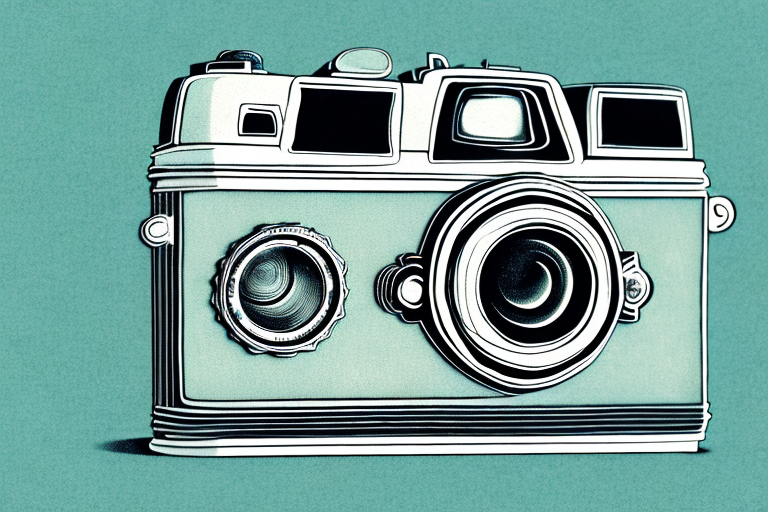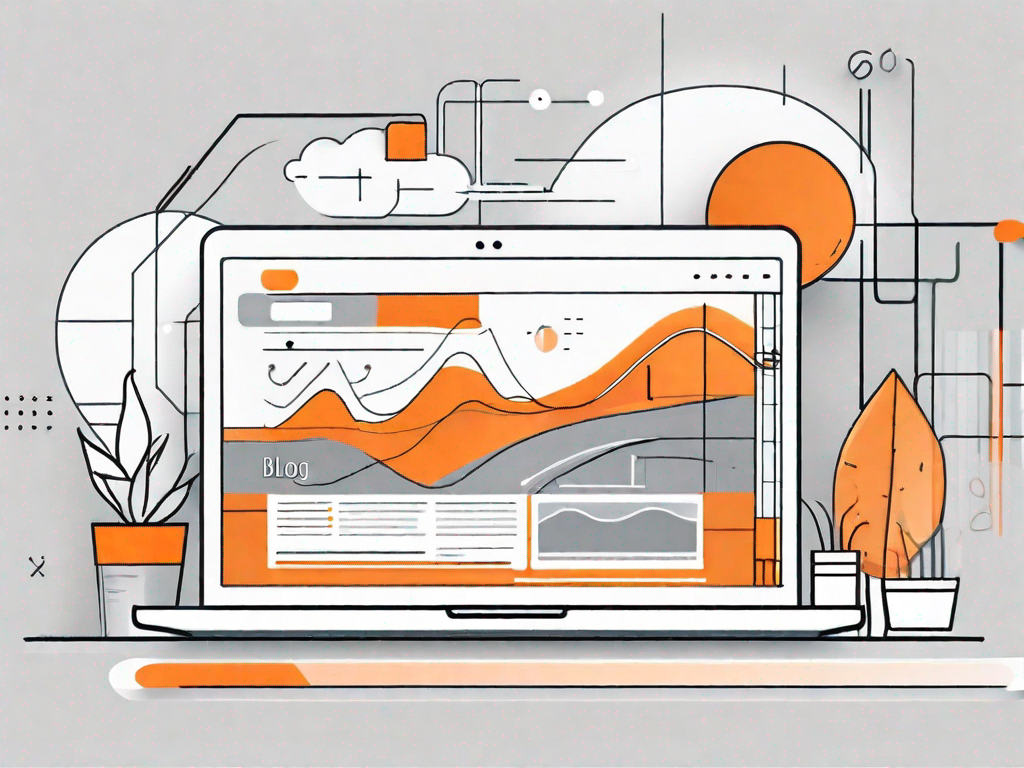.svg)
The Power of Nostalgia Marketing: Tapping into Emotions from the Past
.svg)

In today's fast-paced and ever-evolving world of marketing, businesses are constantly looking for innovative ways to connect with their target audience. One powerful strategy that has gained significant traction in recent years is nostalgia marketing. By harnessing the emotions and sentimentality associated with past experiences, brands are able to create a deep and lasting connection with consumers. In this article, we will explore the psychology behind nostalgia, and how businesses can leverage it to captivate and engage their audience.
Understanding the Psychology of Nostalgia
At its core, nostalgia is a bittersweet longing for the past. It is a sentimental remembrance of a time gone by, often associated with feelings of warmth, joy, and comfort. Research has shown that nostalgia can actually have a positive effect on a person's mood, making them more open and receptive to messages and experiences.
Nostalgia has the power to transport us back to a different time, a time when life seemed simpler and more carefree. It allows us to relive cherished memories and reconnect with our past selves. Whether it's the smell of freshly baked cookies that reminds us of our grandmother's kitchen or the sound of a familiar song that takes us back to our teenage years, nostalgia has a way of evoking powerful emotions.
But what is it about nostalgia that makes it so appealing? One theory suggests that nostalgia serves a psychological function by helping us maintain a sense of continuity and identity. By revisiting the past, we are able to reaffirm who we are and where we come from. It provides us with a sense of grounding in an ever-changing world.
The Role of Memory and Emotion in Nostalgia Marketing
Memory plays a crucial role in nostalgia. When we experience something nostalgic, our brain activates the same neural pathways associated with emotions and reward. This creates a powerful connection between the brand and the consumer, as they are able to tap into the positive emotions associated with cherished memories.
Imagine walking down the street and catching a whiff of a familiar scent that instantly transports you back to your childhood. Suddenly, you're flooded with memories of playing in the park, eating ice cream on hot summer days, and laughing with friends. Now, imagine if a brand could capture that same feeling and associate it with their product. That's the power of nostalgia marketing.
By evoking personal memories, nostalgia marketing has the ability to forge an emotional bond between consumers and brands. This emotional resonance not only increases brand loyalty but also influences purchasing decisions. When consumers feel a deep connection to a brand, they are more likely to choose that brand over others, even if it means paying a higher price.
Exploring the Link Between Nostalgia and Consumer Behavior
Studies have shown that nostalgia has a direct impact on consumer behavior. When consumers experience nostalgia, their willingness to pay increases significantly. Additionally, they are more likely to share nostalgic experiences with others, amplifying the reach and impact of nostalgia marketing campaigns.
One reason nostalgia is so effective is its ability to make consumers feel a sense of belonging and connection. By tapping into shared cultural references and iconic symbols, brands can create a sense of nostalgia that resonates with a wide range of consumers. Whether it's a vintage logo that reminds us of a bygone era or a retro packaging design that takes us back to our childhood, these nostalgic cues can trigger a strong emotional response.
Furthermore, nostalgia marketing can also tap into our desire for authenticity. In a world that often feels artificial and disconnected, nostalgia allows us to seek out experiences and products that feel genuine and rooted in tradition. This desire for authenticity can influence our purchasing decisions, leading us to choose brands that evoke a sense of nostalgia and nostalgia marketing campaigns that transport us to a simpler time.
So, the next time you find yourself reminiscing about the past or feeling a surge of emotion when you see a familiar symbol or hear a beloved tune, remember that nostalgia is not just a fleeting sentiment. It has the power to shape our perceptions, influence our behavior, and create lasting connections between consumers and brands.
Leveraging Nostalgia to Connect with Consumers
Now that we understand the psychological aspects of nostalgia, let's explore how businesses can effectively leverage it to connect with consumers on a deeper level.
Creating Authentic Brand Stories Rooted in Nostalgia
One powerful way to tap into nostalgia is by creating authentic brand stories that are rooted in the past. By sharing the history and heritage of the brand, businesses can evoke a sense of nostalgia and create a narrative that consumers can connect with on an emotional level.
Highlighting the journey of the brand, the people behind it, and the values it stands for can create a nostalgic connection that resonates with consumers, making them feel like a part of something meaningful.
Using Nostalgic Imagery and Iconic References in Advertising Campaigns
Another effective strategy in nostalgia marketing is the use of nostalgic imagery and iconic references in advertising campaigns. By incorporating familiar visuals and symbols from the past, businesses can trigger nostalgic emotions in consumers, capturing their attention and creating a memorable brand experience.
Whether it's a classic logo, a vintage design element, or a reference to a beloved cultural icon, the use of nostalgia in advertising campaigns can transport consumers back in time, creating a unique and engaging connection with the brand.
Incorporating Nostalgic Elements in Product Design and Packaging
In addition to advertising, businesses can also incorporate nostalgic elements in their product design and packaging. By giving their products a retro-inspired makeover, brands can evoke a sense of nostalgia that not only delights consumers but also creates a desire to interact and engage with the brand.
From retro packaging designs to products that pay tribute to classic designs, businesses can tap into the emotional power of nostalgia to create a unique and memorable brand experience.
Nostalgia Marketing Success Stories
Now that we've explored the strategies behind nostalgia marketing, let's dive into some real-world success stories that demonstrate the power of this approach.
Case Study: Coca-Cola's "Share a Coke" Campaign
In 2011, Coca-Cola launched its "Share a Coke" campaign, which transformed the brand's iconic logo into a series of personalized labels. By printing popular names and terms of endearment on their bottles, Coca-Cola tapped into nostalgia by evoking a sense of personal connection and shared experiences.
The campaign was a massive success, with consumers actively searching for bottles with their names and sharing their experiences on social media. It not only increased sales but also strengthened the emotional connection between the brand and its consumers.
Case Study: Nintendo's NES Classic Edition
In 2016, Nintendo released the NES Classic Edition, a miniaturized version of their iconic 8-bit gaming console from the 1980s. The release of this nostalgia-inducing product created a frenzy among both long-time fans and a new generation of gamers.
By capitalizing on the fond memories of classic video games, Nintendo was able to create a highly successful product that rekindled the passion for retro gaming. The NES Classic Edition quickly sold out and became a sought-after item, solidifying Nintendo's position as a leader in nostalgia-driven marketing.
Overcoming Challenges in Nostalgia Marketing
While nostalgia marketing can be powerful, businesses must be mindful of the challenges that come with this approach.
Balancing Nostalgia with Innovation and Modernity
One challenge businesses face is finding the right balance between nostalgia and embracing innovation and modernity. While nostalgia can be a powerful tool, brands must also stay relevant and adapt to changing consumer preferences and expectations.
By combining nostalgic elements with innovative and fresh ideas, businesses can create a unique brand experience that appeals to both the sentimentality of the past and the excitement of the present.
Avoiding Stereotypes and Appropriation in Nostalgic Branding
Another challenge in nostalgia marketing is avoiding stereotypes and appropriation. It is important for brands to be mindful of cultural sensitivities and to avoid appropriating elements of the past that may be offensive or disrespectful.
By conducting thorough research and consulting with diverse groups, businesses can ensure that their nostalgic branding efforts are inclusive and respectful, resonating with a wide range of consumers.
Future Trends in Nostalgia Marketing
As we look toward the future, there are several emerging trends in nostalgia marketing that businesses should keep in mind.
The Rise of Nostalgia in Digital Marketing
In the digital age, nostalgia has found a new platform. With the rise of social media and digital content, brands are increasingly leveraging nostalgia to create engaging online experiences.
Whether it's through interactive quizzes that take consumers on a trip down memory lane or immersive virtual reality experiences that transport them back in time, digital nostalgia marketing offers exciting opportunities to connect with consumers in innovative and exciting ways.
Personalization and Customization in Nostalgia Marketing
Another trend in nostalgia marketing is the focus on personalization and customization. Brands are finding creative ways to allow consumers to customize their products or experiences, tapping into their individual memories and preferences.
From personalized promotions and packaging to customized digital experiences, businesses are leveraging nostalgia to create unique and memorable interactions with their target audience.
In conclusion, nostalgia marketing is a powerful strategy that allows businesses to tap into the emotions and sentiments associated with the past. By understanding the psychology behind nostalgia and leveraging it effectively, brands can create deep and lasting connections with consumers, influencing their behavior and driving long-term loyalty. With thoughtful consideration of challenges and a focus on future trends, businesses can harness the power of nostalgia marketing to create memorable brand experiences and achieve marketing success.
Let's
Let’s discuss how we can bring reinvigorated value and purpose to your brand.







.svg)